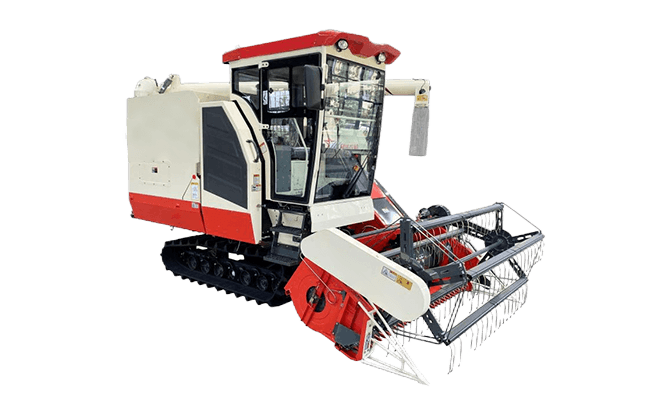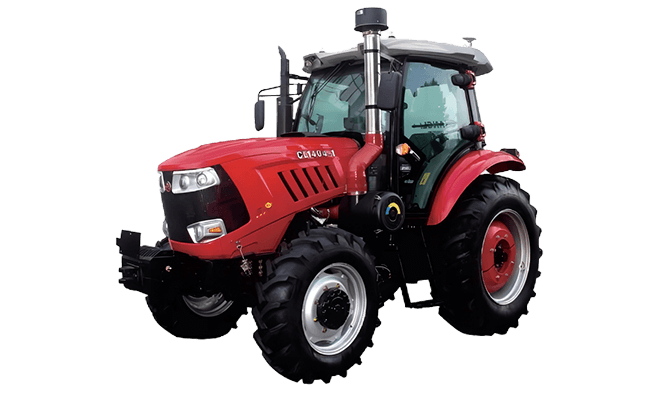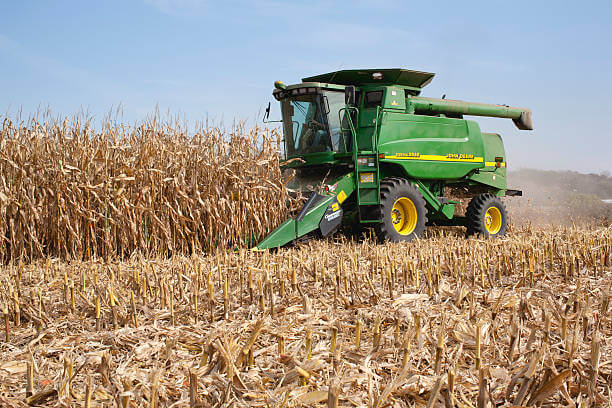Agricultural machinery plays a crucial role in modern agriculture, increasing efficiency and productivity. There are various types of agricultural machinery, each designed for specific tasks. Overall, agricultural machinery has revolutionized farming practices, making them more efficient and sustainable.
Agricultural machinery plays a crucial role in modern farming, significantly boosting production efficiency and crop quality. Key types include harvesters (such as combine harvesters and corn harvesters), tractors (including crawler and four-wheel tractors), seeders, fertilization and irrigation machinery, tillage machinery, and post-harvest processing machinery. These machines not only reduce labor costs but also promote precision agriculture, efficiently utilizing resources and minimizing environmental impact, thus achieving sustainable agricultural production.
Discover the diversity and applications of agricultural machinery and unveil the technological power behind modern agricultural production!
Contents
What is Agricultural Machinery?
Agricultural machinery refers to various mechanical devices used in farming to save labor and improve productivity. From simple tools to complex machines, these devices have evolved significantly over the years.
The Importance of Agricultural Machinery
Increased Production Efficiency: Mechanized farming and harvesting dramatically improve production efficiency.
Reduced Labor Intensity: Machinery reduces the need for manual labor, cutting down on labor intensity and working hours.
Precision Agriculture: High-tech equipment enables precision farming, optimizing resource use.
Environmental Protection: Eco-friendly machinery minimizes environmental impact, promoting sustainable farming.
Types and Uses of Farming Equipment
Farming equipment is a broad term that includes a variety of tools designed to make farming more efficient and productive. These tools can be divided into different categories based on their specific functions. Below, we’ll explore the main types of farming equipment and how they’re used in modern farming.
Harvester
Harvester is essential for gathering mature crops from the fields. There are different types of harvesting equipment designed for specific crops.
- Combine Harvester: This versatile machine combines three different harvesting operations—reaping, threshing, and winnowing—into one process. It’s used for crops like wheat, barley, oats, and rye. Combine harvesters are efficient, reducing labor costs and speeding up the harvesting process.
- Corn Harvester: These machines are designed specifically for harvesting corn. They remove the ears from the stalks and process them in one pass. Corn harvesters can be self-propelled or mounted on a tractor, making it easy to collect and process corn efficiently.
- Rice Harvester: Rice harvesters come in tracked and self-propelled models. These machines are designed to handle the unique requirements of rice harvesting, including cutting, threshing, and cleaning the grains. Tracked models are particularly useful in wet, paddy fields where wheeled machines would struggle.
- Peanut Picker: Peanut pickers harvest and clean peanuts from the fields. They dig up the peanut plants, shake off the soil, and remove the peanuts from the vines.
- Pepper Harvester: These machines are designed specifically for harvesting peppers, ensuring that the delicate crops are collected without damage. They’re often used on large-scale pepper farms to increase harvesting efficiency.
- Silage Machine: Silage machines are used to cut and process green forage plants (like corn, grass, and legumes) into silage for livestock feed. The process involves chopping the plants and packing them to ferment, preserving the nutritional value for livestock during the off-season.

Tractors
Tractors are the workhorses of modern farming, providing the power needed to pull and operate various farm implements.
- Crawler Tractor: These tractors have tracks instead of wheels, giving them better traction and stability on soft or uneven ground. They’re ideal for challenging terrains and heavy-duty tasks.
- 2 Wheel Tractor: Also known as walking tractors, these compact and versatile machines are suitable for small farms and garden work. They’re easy to maneuver and can be equipped with various attachments for tasks like plowing, tilling, and mowing.
- 4 Wheel Tractor: Four-wheel tractors are widely used in larger farming operations. They offer more power and versatility, allowing them to pull heavy implements, transport goods, and handle a wide range of tasks, from planting to harvesting.
Seeder
Seeders plant seeds at the correct depth and spacing, ensuring optimal growing conditions. There are different designs, including air seeders and mechanical seeders, each suited to different crop types and field conditions.
Fertilization and Irrigation Machinery
These machines make sure crops get the right amount of water and nutrients.
- Irrigation Machinery: Includes things like sprinklers and drip irrigation. Sprinklers spread water evenly across the field, while drip systems deliver water directly to the roots of the plants, reducing water waste and improving efficiency.
- Fertilizer Applicator: Used to spread solid fertilizers evenly across the fields. These machines can be set to apply the exact amount of fertilizer needed, reducing waste and promoting healthy crop growth.
- Sprayer: Sprayers apply liquid fertilizers, pesticides, and herbicides. They can be mounted on tractors or operated as standalone units, ensuring even application and protecting crops from pests and diseases.
Land Preparation Machinery
Land preparation machinery prepares the soil for planting by breaking it up and creating a good seedbed.
- Disc Harrow: Breaks up clods and smooths the soil surface. It’s often used after plowing to prepare the soil for planting.
- Plow: Turns over the top layer of soil, burying weeds and crop residues and loosening the soil to improve aeration and drainage.
- Ridge Plow: Creates ridges in the soil for planting row crops. This method improves water drainage and helps prevent soil erosion.
- Rotary Cultivator: Uses rotating blades to deeply till the soil, breaking it up into finer particles and preparing a smooth seedbed.
Reprocessing Machinery
These machines handle crops after they’ve been harvested, preparing them for storage or sale.
- Baler: Compresses crops like hay, straw, or silage into compact bales for easy handling, storage, and transport.
- Dryer: Removes excess moisture from crops to prevent spoilage during storage. Grain dryers, for example, are essential for preserving harvested grain.
- Threshing Machine: Separates grains from their husks or straw. Threshing machines are crucial for crops like wheat, rice, and barley.
- Sorting Machine: Grades and sorts crops based on size, quality, and other criteria. Sorting machines help ensure that only the best-quality products reach the market.
- Silo Storage: Large storage structures designed to store bulk quantities of grain or silage. Silos protect crops from pests and the elements, preserving their quality for longer periods.

Applications in Commercial Agriculture
Mechanized Tillage: Increases efficiency and reduces production costs.
Automated Planting and Harvesting: Speeds up and improves accuracy in planting and harvesting.
Precision Fertilization and Irrigation: Uses sensors and GPS to optimize fertilization and irrigation.
Data-Driven Farm Management: Uses agricultural data to make decisions, improving efficiency and crop quality.
Environmental Sustainability: Reduces chemical use and conserves water resources.
Modern Developments in Agricultural Machinery
Technological Advances and Innovation: Discusses trends like artificial intelligence, robotics, and autonomous machinery.
Smart Agricultural Machinery: Examples include autonomous tractors and harvesters, as well as AI and robots in farming equipment.
Sustainable Agricultural Machinery: Focuses on developing and using low-emission, energy-efficient machinery to support sustainable farming systems.

Agricultural machinery has changed farming by making it more productive, efficient, and sustainable. To make the most of these tools, you need to know about the different types of machinery: harvesters, tractors, seeders, fertilization and irrigation equipment, tillage machinery, and post-harvest processing machines. Each type of machinery does something different, from getting the soil ready and planting seeds to harvesting crops and getting them ready to store.
By picking the right machinery and taking care of it, you can save a ton of money on labor, get more crops, and use your resources better. As technology keeps getting better, we’ll see more smart and sustainable agricultural machinery. That will change the way we farm, whether we’re talking about big commercial farms or small farms. If you want to be more efficient, make more money, and take better care of the environment, you need to be open to these changes.

